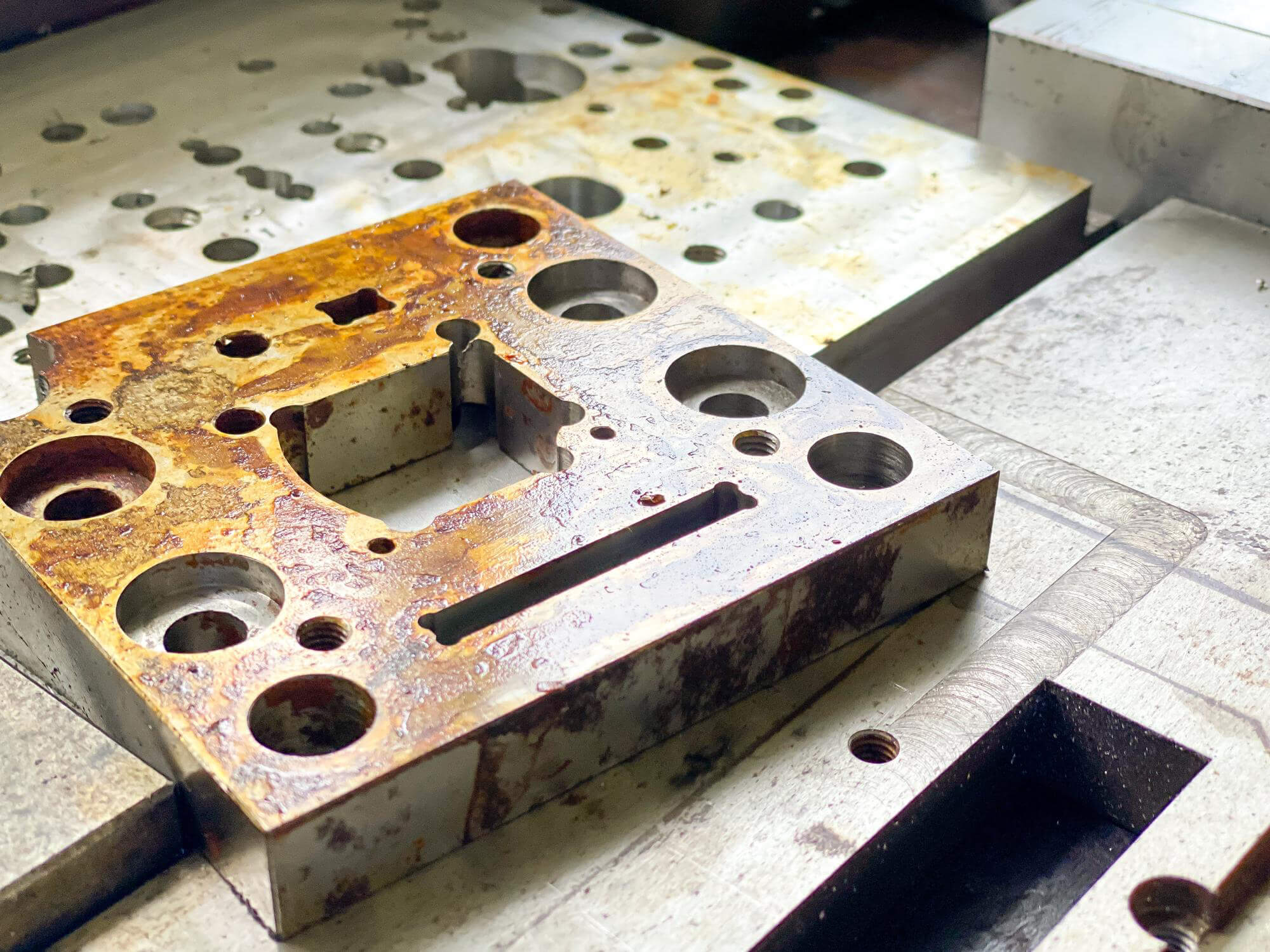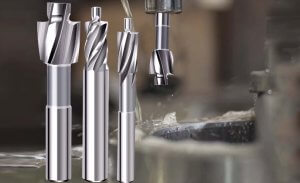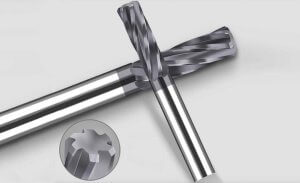Introduction
Aluminum injection mold tools are a critical component in industries ranging from aerospace to automotive. In today’s fast-paced manufacturing environment, especially with CNC machining, tool life plays a pivotal role in determining overall production efficiency and costs. If you’re a procurement officer or a technical expert, understanding the materials and tools that impact mold life can help you make better purchasing and operational decisions.
This article will compare two popular tool materials—Carbide and Polycrystalline Diamond (PCD)—in the context of CNC machining for aluminum injection molds. By the end of this discussion, you will have a clearer understanding of which material best suits your production needs, especially when balancing performance, cost, and longevity.
Understanding Aluminum Injection Mold Tool Life
What is Tool Life in CNC Machining?
In CNC machining, tool life refers to the duration a cutting tool can effectively function before it wears out or fails. For aluminum injection mold tools, tool life is of critical importance because the longevity and efficiency of a mold tool can directly influence production cycles, costs, and product quality. If tool life is short, you’ll face frequent downtime for tool replacement, leading to delays and increased operational costs.
Factors Affecting Tool Life
- Material Properties: Different materials react uniquely to cutting forces, temperature, and friction. In the case of aluminum, high thermal conductivity helps dissipate heat, but the hardness of aluminum alloys, particularly high-silicon types, can increase tool wear.
- Wear Mechanisms: Tool wear in CNC machining typically comes from three mechanisms: abrasive wear, adhesion wear, and chemical wear. For aluminum, abrasive wear from hard particles (such as silicon in alloys) is the main contributor to tool degradation.
- Cutting Speed and Feed Rate: The faster and deeper the cut, the quicker the tool wears out. However, with the right tools, you can strike a balance between high-speed machining and maintaining reasonable tool life.
- Heat Generation: Higher temperatures in cutting can accelerate tool wear, especially in high-speed CNC machining. This is less of an issue with aluminum’s high thermal conductivity, but still something to consider when using cutting tools that aren’t well-suited for high temperatures.
Why Tool Life Matters for Aluminum Injection Mold Tools
Aluminum injection molds are typically used for high-volume production. Tool longevity is especially crucial because frequent tool changes can lead to downtime, increased costs, and potential defects in parts. If you’re choosing a CNC machining supplier, one of the key metrics you should inquire about is the estimated tool life for the materials and designs they’re producing.
Key Takeaway: Longer tool life equates to more efficient production, reduced downtime, and lower long-term costs.
Key Factors in CNC Machining for Aluminum Injection Molds
Tool Materials: Carbide vs. PCD
In CNC machining, the material of the cutting tool is one of the most important factors influencing tool life. Let’s explore the two most commonly used materials for aluminum injection molds—Carbide and PCD.
- Carbide: This material is known for its strength and resistance to wear. Carbide tools are generally used for moderate-speed machining and perform well with standard aluminum alloys.
- Polycrystalline Diamond (PCD): PCD is made by sintering diamond particles under high pressure and temperature. It offers exceptional hardness and resistance to wear, making it ideal for high-speed machining of abrasive materials like high-silicon aluminum alloys.
Aluminum’s High Thermal Conductivity
One of the challenges in machining aluminum, particularly aluminum alloys, is managing the heat generated during cutting. Due to aluminum’s high thermal conductivity, heat dissipates quickly, which helps to reduce the likelihood of tool overheating. However, this same property can cause issues if the cutting tool material doesn’t perform well at high temperatures.
For this reason, PCD tools are often preferred for high-speed applications because they can maintain their integrity at extreme speeds without losing cutting efficiency.
Case Study: Machining High-Silicon Aluminum Alloys
Silicon is added to aluminum to improve strength and wear resistance, but high-silicon aluminum alloys are particularly abrasive. This makes the selection of the right tool even more important. In such cases, PCD tools significantly outperform Carbide in terms of wear resistance and longevity, even though they come at a higher upfront cost.
Table 1: Performance Comparison – Carbide vs PCD in High-Silicon Aluminum
| Tool Material | Cutting Speed (m/min) | Tool Life (No. of Parts) | Surface Finish Quality | Cost per Tool |
|---|---|---|---|---|
| Carbide | 500-1000 | 500-2000 | Moderate | $50-$150 |
| PCD | 1000-7500 | 3000-10000 | Excellent | $200-$500 |
Key Takeaway: While PCD tools come at a higher cost, they deliver longer tool life and higher performance, making them more cost-effective in the long run for high-silicon aluminum applications.
Carbide vs. PCD Tools in CNC Machining
Detailed Comparison: Performance and Cost
In the context of CNC machining for aluminum injection mold tools, Carbide and PCD tools serve different needs. The choice between them will depend on your production requirements, such as the volume of parts, the complexity of the geometry, and the type of aluminum alloy being machined.
Carbide Tools
- Advantages:
- Lower initial cost.
- Good for moderate-speed machining.
- Effective for standard aluminum alloys.
- Disadvantages:
- Wears out faster, especially with abrasive alloys.
- Requires more frequent tool changes.
PCD Tools
- Advantages:
- Exceptional tool life, especially with high-silicon aluminum.
- Supports high-speed machining.
- Delivers superior surface finishes.
- Disadvantages:
- Higher upfront cost.
- Not cost-effective for low-volume production.
When to Choose Carbide vs. PCD
If your operation focuses on high-volume production with complex or abrasive aluminum alloys, PCD tools are the better investment. On the other hand, if you’re working with simpler aluminum alloys or smaller production runs, Carbide tools may offer better value for your needs.
Table 2: Cost and Performance Analysis of Carbide and PCD Tools
| Tool Material | Initial Cost | Tool Life (Hours) | Replacement Frequency | Suitability for High-Silicon Alloys | Overall Cost Efficiency |
|---|---|---|---|---|---|
| Carbide | $50-$150 | 20-50 | Frequent | Poor | Moderate |
| PCD | $200-$500 | 200-500 | Rare | Excellent | High |
Key Takeaway: PCD tools provide superior performance for high-speed machining and abrasive materials, but Carbide is a cost-effective solution for less demanding applications.
Maximizing Tool Life in CNC Machining for Aluminum Injection Mold Tools
Best Practices for Improving Tool Life
- Optimize Cutting Parameters: Select the correct feed rates, cutting speeds, and depths to minimize tool wear.
- Use the Right Coolant: The use of water-based coolants can help reduce heat buildup, especially for Carbide tools.
- Monitor Tool Wear: Implement real-time monitoring systems to track tool wear and replace tools before they fail completely.
- Work with a Reputable Supplier: Choose CNC machining suppliers who can guarantee the proper use of tools and cutting parameters to extend tool life.
Key Takeaways for Procurement Teams
If you’re looking to source CNC machining services for aluminum injection molds, selecting the right tool material can make a significant difference in overall production efficiency and cost. Here are the main points to consider when evaluating a supplier:
- Ask for detailed estimates on tool life based on your specific production needs.
- Ensure the supplier uses the right tool materials for your aluminum alloy (e.g., Carbide for standard alloys, PCD for high-silicon alloys).
- Prioritize suppliers that offer real-time monitoring of tool wear and tool performance.
By making informed decisions, you’ll be able to balance upfront tool costs with long-term production savings.
FAQ
- What factors most affect aluminum injection mold tool life in CNC machining?
Key factors include tool material, cutting speed, feed rates, and the aluminum alloy being machined. - How do I choose between Carbide and PCD tools?
Carbide is cost-effective for standard aluminum alloys, while PCD is best for high-silicon aluminum and high-volume production. - What should I ask a potential CNC machining supplier about tool life?
Ask for specific data on tool life for the materials being machined, as well as their process for monitoring and replacing worn tools. - What are the typical costs of CNC machining for aluminum injection molds?
Costs vary based on tool type, production volume, and complexity, but you can expect Carbide tools to cost $50-$150 and PCD tools to range from $200-$500. - **
How does cutting speed impact tool life?**
Higher cutting speeds reduce tool life but can increase production efficiency, making the right balance important.
- Can I use standard Carbide tools for high-silicon aluminum molds?
Carbide tools are not ideal for high-silicon alloys due to the abrasive nature of silicon, which causes rapid wear. - What are the signs that a tool needs replacement during CNC machining?
Decreased surface finish quality, increased cutting forces, and visible wear on the tool are common signs. - Is tool life the same for all aluminum alloys?
No, higher-silicon alloys tend to reduce tool life faster due to their abrasive nature.
Other Articles You Might Enjoy
- How to Minimize Tool Chatter in precision CNC machining of Aluminum Parts?
Introduction to Tool Chatter in CNC Machining of Aluminum Tool chatter in CNC machining significantly undermines the quality and precision of machined aluminum parts. This phenomenon, characterized by oscillations and…
- Bead Blasting: The Secret to Quality CNC Machining(cnc machining tools Mavis)
The world of manufacturing has witnessed revolutionary changes with the advent of Computer Numerical Control (CNC) machining. It is a process used in the manufacturing sector that involves the use…
- Understanding CNC Machining: The Bead Blasting Process(cnc machining tools Valentina)
In the world of manufacturing, precision is paramount. One widely adopted method known for its precision is CNC machining. An integral subcomponent in the broader spectrum of CNC (Computer Numerical…
- CNC Aluminum Machining Services: Advanced Techniques for Perfect Parts
CNC Aluminum Machining Services In the current manufacturing landscape, CNC aluminum machining services play a pivotal role. CNC which simply translates to 'Computer Numerical Control', is an advanced technique used…
- CNC Machining Materials: Acrylic vs. Polycarbonate for Transparent Components
CNC Machining: An Introduction and the Importance of Material Type Computer Numerical Control (CNC) machining is a manufacturing process where pre-programmed computer software dictates the movement of factory tools and…
- Unlocking the Potential of Bead Blasting In CNC Machining(cnc machining tools Gerald)
Bead blasting is an integral process in Computer Numerical Control (CNC) machining, contributing to the finishing touches that enhance both aesthetic and functional aspects of manufactured parts. Whether you're a…








